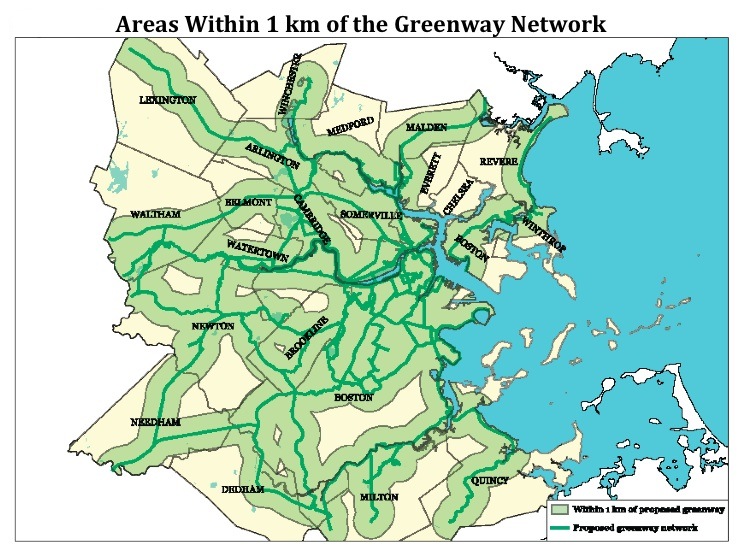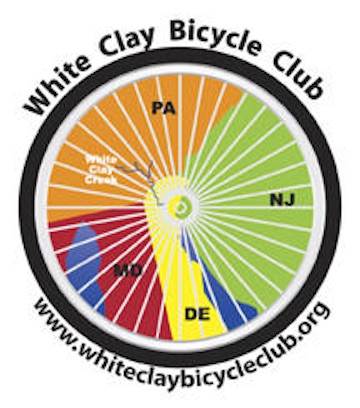Connecting 21 Cities and Towns in the Boston Region with a Greenway Network

Note: Professor Peter Furth spoke last week at the Walkable Bikeable Delaware Summit in Dover. In a recent paper, he and his co-authors describe a plan to connect 21 Boston-area cities and towns by a “greenway” network designed for cycling. 72% of the regional population lives within 1 km (0.62 mi) of the proposed greenway network. (A buffer width of 1 km was chosen by the authors rather than 1 mile because it was believed that having to walk or cycle 1 mile to get to a greenway would be considered a deterrent to many people (especially where there is no safe access route for bicycling), while a distance of 1 km would not.)

A Greenway Network Vision for Metro Boston
by Peter Furth, David Loutzenheiser, Steven Miller and Peyman Noursalehi
Urban greenways are attractive for walking and especially for bicycling because they offer a pleasant and near-traffic-free environment in an area with high population density and rich with destinations. Unfortunately, urban greenways are often not connected to one another, requiring cyclists to negotiate heavy traffic getting from one greenway to another and thus diminishing their utility. In the Boston region, a planning and visioning effort is underway to promote the vision of a network of connected greenways offering continuous pleasant, low-stress routes by bicycle or by foot between origins and destinations across the urban area. The network plan emphasizes both connecting existing greenways and creating new greenways. Opportunities for new greenway corridors are described, including radical road diets that remove two lanes from overly-wide roads in order to create parkland strips that can host a shared use path.
Greenway network planning involves balancing the desire to increase the network’s reach and connectivity by adding segments against the need to preserve the integrity of the “greenway” brand. We show that using strict criteria that emphasize low traffic stress, an extensive and dense greenway network is feasible using creative engineering solutions such as road diets and cycle tracks. Evaluation measures examine the quality, reach, geographic distribution, and connectivity of the network.
Read the rest of the paper HERE>>>
RELATED:
• First State Trails and Pathways Initiative
• Will the Delaware General Assembly Vote For Bike and Pedestrian Improvements This Year?
A Bike Delaware Archive note: This article has been categorized in the following Archive category:








